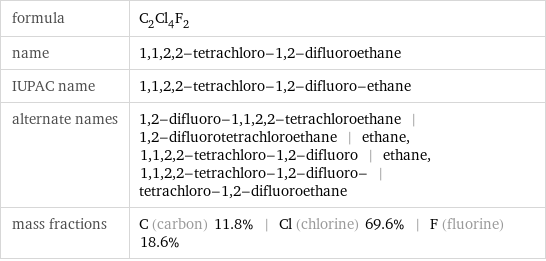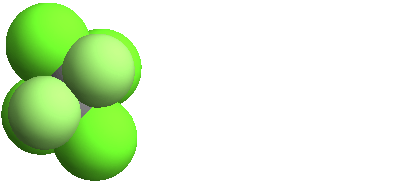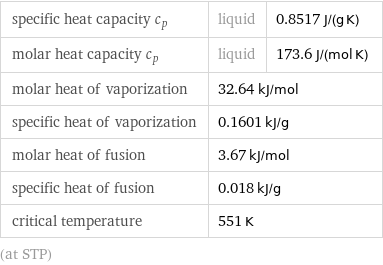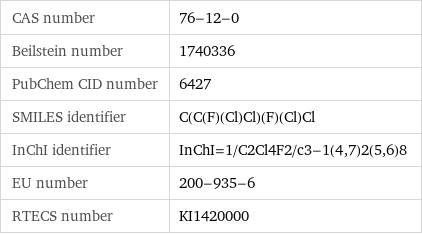Input interpretation

1, 1, 2, 2-tetrachloro-1, 2-difluoroethane
Chemical names and formulas

formula | C_2Cl_4F_2 name | 1, 1, 2, 2-tetrachloro-1, 2-difluoroethane IUPAC name | 1, 1, 2, 2-tetrachloro-1, 2-difluoro-ethane alternate names | 1, 2-difluoro-1, 1, 2, 2-tetrachloroethane | 1, 2-difluorotetrachloroethane | ethane, 1, 1, 2, 2-tetrachloro-1, 2-difluoro | ethane, 1, 1, 2, 2-tetrachloro-1, 2-difluoro- | tetrachloro-1, 2-difluoroethane mass fractions | C (carbon) 11.8% | Cl (chlorine) 69.6% | F (fluorine) 18.6%
Lewis structure

Draw the Lewis structure of 1, 1, 2, 2-tetrachloro-1, 2-difluoroethane. Start by drawing the overall structure of the molecule: Count the total valence electrons of the carbon (n_C, val = 4), chlorine (n_Cl, val = 7), and fluorine (n_F, val = 7) atoms: 2 n_C, val + 4 n_Cl, val + 2 n_F, val = 50 Calculate the number of electrons needed to completely fill the valence shells for carbon (n_C, full = 8), chlorine (n_Cl, full = 8), and fluorine (n_F, full = 8): 2 n_C, full + 4 n_Cl, full + 2 n_F, full = 64 Subtracting these two numbers shows that 64 - 50 = 14 bonding electrons are needed. Each bond has two electrons, so the above diagram has all the necessary bonds. There are 7 bonds and hence 14 bonding electrons in the diagram. Lastly, fill in the remaining unbonded electrons on each atom. In total, there remain 50 - 14 = 36 electrons left to draw: Answer: | |
3D structure

3D structure
Basic properties

molar mass | 203.8 g/mol phase | liquid (at STP) boiling point | 93 °C density | 1.655 g/cm^3 dielectric constant | 2.52
Liquid properties (at STP)

density | 1.655 g/cm^3 vapor pressure | 40 mmHg (at 20 °C) dynamic viscosity | 0.00121 Pa s (at 30 °C) surface tension | 0.02273 N/m refractive index | 1.411
Units

Thermodynamic properties

specific heat capacity c_p | liquid | 0.8517 J/(g K) molar heat capacity c_p | liquid | 173.6 J/(mol K) molar heat of vaporization | 32.64 kJ/mol | specific heat of vaporization | 0.1601 kJ/g | molar heat of fusion | 3.67 kJ/mol | specific heat of fusion | 0.018 kJ/g | critical temperature | 551 K | (at STP)
Chemical identifiers

CAS number | 76-12-0 Beilstein number | 1740336 PubChem CID number | 6427 SMILES identifier | C(C(F)(Cl)Cl)(F)(Cl)Cl InChI identifier | InChI=1/C2Cl4F2/c3-1(4, 7)2(5, 6)8 EU number | 200-935-6 RTECS number | KI1420000
Safety properties

flash point | 12 °C

DOT numbers | 1078
Toxicity properties

odor | ether-like short-term exposure limit | 834 mg/m^3 threshold limit value | 500 ppmv

long-term exposure limit | 834 mg/m^3 (over 8 hours) RTECS classes | tumorigen | primary irritant